Interview by Will Silk and photos courtesy of Forgotten Fiberglass
Chuck Tatum was what you could say “at the right place, at the right time” by living in California in the early 1950s. It was the golden days of hot rodding, and there were no rules in regards to what or how you built your machine.
Coming out of the Second World War with a Bronze Star for his actions in the Battle for Iwo Jima, Chuck set about learning to build cars, and by the early 1950s he had been bitten by the road racing bug after a stint in midget and quarter mile racing with a few track roadsters he had put together. Chuck eventually moved into building Formula Vee racing cars, and his Crusader FVs are some of the most conquering cars that the budget formula has ever seen turn a wheel.
Now in his early 80s, Chuck continues to stay busy, particularly with his book “Red Blood, Black Sand” which is about his involvement in the Battle for Iwo Jima. Chuck’s book has recently been turned into an HBO TV series thanks to Tom Hanks and Steven Spielberg, with more info being available at www.marineswwii.com. Yet Chuck can still be found toying about with Formula Vees today in his free time. A road racing veteran of one of the most prolific periods in motorsports, Chuck was kind enough to sit down and chat with Sports Car Digest for an interview about those fantastic times on the West Coast of the United States.
Sports Car Digest: Is it true that the Tatum Special was conceived in a Stockton, California hotel while you were having drinks with Sam Weiss, Phil Hill, and Doug Trotter in 1952?
Chuck Tatum: Yeah. They had a road race there that day and Sam Weiss won it in his Allard and the dinner later was in the Stockton Hotel, upstairs in the Garden Room. Doug Trotter had an Aston Martin that we had converted to a GMC [engine]. We were talking in general and I voiced that I thought I could build a car that could beat the Allard, which seemed like a pretty boastful thing I’m sure. I had built other cars before like track roadsters. But after investigating an Allard and I could see that this use to be a Ford. Of course I had my own ideas on the frame and everything and I was going to use the GMC truck engine in it, which nobody had used in a sports car before.
SCD: Your choice of a power plant is what makes the Tatum Special so unique; could you elaborate on what brought you to your selection of the GMC inline six?
CT: It [the GMC inline six truck engine] was ideal for road racing because in those days Class B was 305 cubic inches, but if you bored the GMC out to four inches by four inches, you had 303 [cubic] inches. This weighed a lot less than the Chrysler engines did, a lot of people didn’t know it, but the GMC weighed 25 pounds than a flathead Ford.
SCD: Really, I didn’t know that.
CT: Yeah, Look how narrow it is and how long. Of course, I equipped it with a magnesium flywheel and magnesium bell housing, which took two of the heaviest things out. I made my own manifolds and everything, so everything was much lighter. Probably the car didn’t weigh more than 1,900 pounds when it was finished, which was probably 500 pounds less than an Allard. And of course with the GMC, I thought of road racing as drag racing connected by turns which it still is.
SCD: I think that was a fairly common mindset in the 1950s, was it not?
CT: Yeah, it got to be that way. So the GMC had all this pure, undiluted torque down low, you could go from turn to turn so fast it embarrassed the people with Chrysler Allards and everything.
SCD: The body was built by Jack Hagemann, and that caused some problems the first time out at Golden Gate Park with Chuck Manning at the wheel?
CT: Well, when the body was first made, I had it made with motorcycle fenders as not a lot of cars were made with motorcycle fenders. My bracketing never was strong enough and I kept running over the fenders. When I got home with it again, I took it back to Hagemann and had him put the new fenders on which he did a graceful job of designing the fenders for it.

SCD: You used as many off the shelf parts as possible, mainly Ford components in the steering and suspension. Aside from the chassis that you designed, what other parts were custom fabricated?
CT: Well, mostly it was modifying Ford parts to adapt because it had an open driveline on it. I did that by taking the rear axle out a Ford pick up truck, like a ’41 or ’42 and converted my car to an open driveline which I had to make all the bracketing to hold it in there. It was suspended on coil springs.
In it I employed a sway bar, or anti-roll bar, and it had some traction rods that I designed. They called it “traction master.” It was one of those things that when you applied the power, it shoved the wheel into the ground harder. I borrowed the idea from Jaguar. Most people don’t know it but the C Jaguar had the same thing. It had a lower arm that went from the rear end to the frame and it had an upper arm that came from the rear end down to the frame on a slant. When you gave it more power, it would try to lift the car, with this it couldn’t because it shoved the wheel into the ground harder. One of the famous things about a C Jaguar, and of course, I borrowed the idea from them.
SCD: The Tatum Special’s race history is impressive, could you tell us more on some of the memorable races you ran while driving the car?
CT: Incidentally there was a doctor that had an Allard at that time, this is back in the early 1950s now, and I’m at the race for the first time with my car [Stockton, California 1953]. I’m out practicing and pretty soon I came in and one of the officials came over and said, “You know you my do well to follow the doctor, he’s a very skilled driver.” I tell you what, I wouldn’t mind if he’d go a little a faster, but of course being a 24 year old kid they thought I might be a smart alec or something. Needless to say the next day I won my race from the rear because when they drew for positions out of 34 cars, guess what, I’m last!
There use to an outfit called Road Racing Register that put together the first professional road race in California at Willow Springs. I entered my car in it, a whole bunch of other cars were there for it, and this was the first time a race was going to pay money. I led the race more than three quarters of the way. I think coming up to the white flag, a rock or something came up through the cowl and hit the spark plug lead, taking it off. Needless to say I only got second out of it, but that was good because when they handed out the prize money I got $1000. Incidentally, a guy in a Manning Special won the race.
SCD: How many other people piloted the Tatum Special?
CT: Other people drove it also; Chuck Manning drove it one time at Golden Gate and there was a stunt man named Kerry Lofton. He drove it at Willow Springs one time.

SCD: You sold the car in 1956; did you continue to drive competitively after selling the Tatum Special?
CT: No, I drove it at Madera and won that race, and I drove it at Santa Barbara one time; but I was just a kid and didn’t have money to go to all these races so I only went to the ones I could afford to go to. I’m really proud of the car and the fact that I made it in a garage by myself basically. The frame was made out of Shelby tubing with two parallel tubes about eight inches apart from the center line and wall thickness was .060”. So you could see, I had a real light weight frame, I could pick the whole frame up myself. I used a Ford front end out front, and originally I used a Ford Zephyr transmission, but later on I changed that to a Jaguar XK. Because the fault with the Ford transmission was when you tried to gear it down from high speed, you could over rev the engine. If you had a Jaguar unit with another gear in there, you could down shift it and stop it better, and not over rev it.
Over the years as I got older and had a family I sold it for $800 because my kids didn’t have a TV set. And over the years other people owned it, more than a few. People had it in drag races and everything. And many, many years later a guy told me that the car was in this guy’s backyard, and I said “I didn’t think it was still around.” Sure enough there it was all dismantled in a chicken coop. Everything was there basically. I made a slick deal with the guy and bought it back for only $1800. I had a hell of a time getting him to sell it for that!
Then I restored the car again completely. Later on I sold it to Bruce Trenery. The next guy that bought it from Trenery is in Los Angeles or Hollywood, Chris Wickersham.
SCD: Having been part of an incredible time in automotive history, what’s your take on the West Coast road racing scene of the 1950s?
CT: I think in that era there was some great ingenuity in building those cars, because we didn’t have any money.
SCD: You raced against guys that later became house hold names in road racing, such as Phil Hill for instance.
CT: I knew Phil real well. We were both stunt drivers in the movie “Johnny Dark”. If you go to Forgotten Fiberglass (http://www.forgottenfiberglass.com/ ) you can read more about that. The guys that drove as stunt drivers in “Johnny Dark” all were some what famous already. Guys like Don Freeland and Phil Hill and Kerry Lofton. Number one I’m proud to have designed and built the Tatum Special, and number two that I was able to use it in so many different things later on.
I worked for a guy named Phil Remington, who is pretty famous, and he and I worked together building the Edwards sports cars, I was the flunky and he was the engineer. He’s still alive and works at AAR. I learned so much working by him.
I’ve gotten to do so many things in racing; it’s almost unfair to other people.
SCD: What attracted you to Formula Vee?
CT: After I had built the Tatum special, and I got better equipped financially, I decided I wanted to build something else and I built a Formula Junior. I succeeded in building an antique as it took so long to finish.
I had to be innovative so I put a four cylinder Goliath engine in it and I used a Volkswagen front end and a Goliath rear end and I made this little Formula Junior. Everything went well except that it wasn’t very fast because it was too heavy.
So when Formula Vee came along, I said “Hey wait a minute, that’s what I really want to do.” So I built a Formula Vee. I got organized and I built the Formula Vee, because I thought it would go, and this was the second one ever made.
SCD: Was that called the Invader?
CT: Yes, it became the Crusader because after I built the first car, my buddies got interested and we built three more that winter. So when it came out we had four Crusaders all ready.
One of the first races was at San Diego, at a track down there, a horse race track. The second one was at Stockton. That night we were getting ready to fill out the entries and we couldn’t think of any names. We went through all the animals, all the Indian tribes, everything; just trying to come up with a new name. We worked and worked, because we had to send those in that night. Finally at about 3AM I said “Hey, getting to run these damn cars is really like a crusade.” One guy said, “Hey that’s it we’re Crusaders!” We entered as Crusaders and that became the name of the car, and of course there were some jokes about it, Crusader Rabbit and all.
We’ve probably made over 150 cars since it began. People ask “Did you keep track?” I say, “No, I didn’t think it was going to be successful.” We made four different versions of the Crusader over the years. As they changed the rules a little bit you could do more to your car of course. Over the years we’ve won a lot of races, I don’t know how many because we never kept track!
SCD: Your son Blake raced a Crusader to the West Coast Championships in 1994. Where is he today?
CT: Blake still drives the cars now and he’s been West Coast Champion I think three different times. He retired as a policeman about two years ago. He’s 51 or 52, something like that, and we now own a Crusader FV and a Crusader Formula First. We have a really beautiful Formula First car, if I do say so myself, and all the races we’ve been in so far we’ve won, which is two to date.
SCD: With a growing resurgence in vintage racing, and vintage FV classes beginning to emerge at more events, do you still find yourself going to races or working with the cars?
CT: Oh I’d go to a race right now if you want to! In my old age, I’m 84 and a half now, I am not as fragile, I mean agile, as I once was and I have to use a walker. Other than that I’m in pretty good shape.
Blake has the cars over at his house now and we are going to be more active this year. I think Blake’s won over 50 FV races, and that’s against the best out there because the best cars are in California, there’s no doubt about that.
SCD: With Formula Vee being a budget class, there’s always some stiff competition isn’t there?
CT: We’re pretty lucky there as we are both skilled at building frames and making fiberglass bodies. We did our own mock up and everything. It’s probably harder to win a Formula Vee race than it is to win Indianapolis. I don’t know, there’s just so many guys that have so much talent and can make there own car or from the other builders. We have plenty of competition.
SCD: On the topic of vintage racing, when was the last time that you had the chance to see the Tatum Special on track?
CT: The last time I saw the car is when they had the American hot rods at Laguna. They invited me down there as one of the old timers and Chris Wickersham had the car there. He still races the car, and the car’s 60+ years old, isn’t that something! Wow, it’s a pretty old car. They say people are still impressed with how well it goes.



SCD: In light of the challenging economic conditions we face today, especially in America, do you see a possible resurgence in low cost, home built specials?
CT: I think when the economy improves it could happen. It’s the economy that’s killed it right now. As you know racing is one of the last things in the world you need to do.
SCD: I would like to close the interview by mentioning your service as a machine gunner in the United States Marine Corps during World War II, service which saw you awarded the Bronze Star for actions while in combat during the fight for Iwo Jima. I would like to thank you for your service, as well as for building some great road racing cars in the years after the War.
CT: Well, thank you, but you have to remember it’s my country too.
—
[Source: Will SIlk; picture credit: Forgotten Fiberglass]


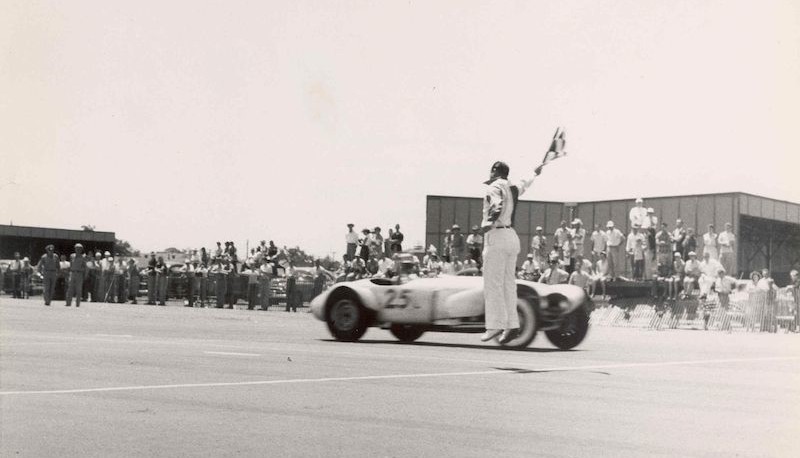
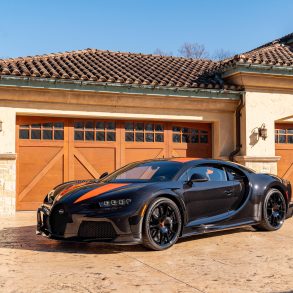
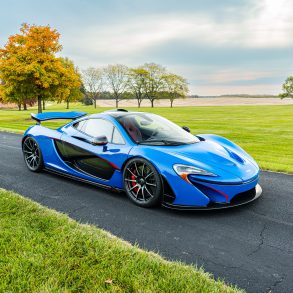
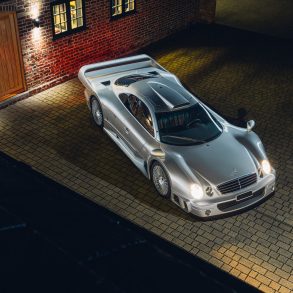
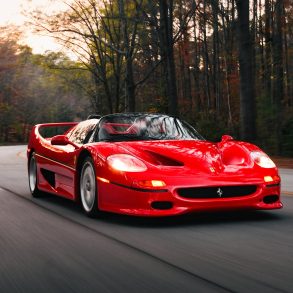
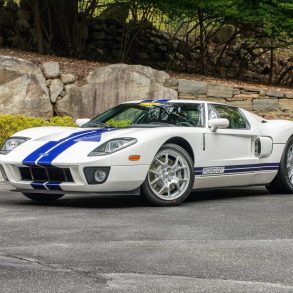
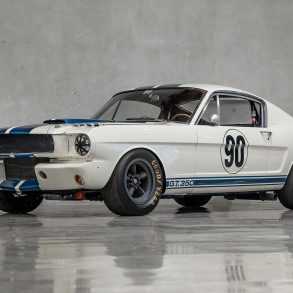

Ah, what memories! The Tatum was different as You did not have to see it on the track, you could pick it out by the sound as it was like no other out there.
Ralph Bush
Great interview, Will!
=rds
Is that a Wayne 12 port head on the GMC engine ?
Those have got to be rare.
I have one of Chucks very early 1963 FVs. It is now listed for sale on Ebay. Listed as Crusader Formula Vee. This one probably needs a story, too. Steve